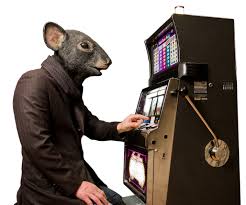How Flashing Lights and Catchy Tunes Make Gamblers Take More Risks
Today, live casinos can be discovered on both computers and mobile phones, thus, people are more exposed to gambling. Just check this in-depth overview of online casinos that have their own mobile apps.
For sure, now it is easier to play your favourite game while waiting in line, stuck in traffic, or travelling.
By replicating the flashing lights and catchy tunes from Las Vegas casinos, digital casinos have become a new source of addiction. People usually start gambling due to the fun and excitement they feel when they test their luck. Looking at numbers, about 80% of US citizens gamble at least once in their lifetime, at 85% of Americans who played slots during the past 12 months were male.
Compulsive Gambling
The core reason why scientists recently started paying more attention to gambling is the fact that at one point it becomes a compulsive action. After some period of time, people stop enjoying gambling as they used to and it becomes more of an urge than a free choice. Hence, the gamblers can be classified as healthy casino goers and problem gamblers. Normal casino goers play because they find this experience interesting and unusual, while problem gamblers are addicted to playing for real money, they tend to miscalculate their options and relay too much on their luck.
Scientists determined that addictive problems in gambling may be caused by the game design that includes numerous cues such as many different types of lights and jingles. These features accompanied by the uncertainty of reward push players to gamble more.
As their excitement increases, they become incapable to do a proper estimate of their winnings, thus, they tend to play longer and faster and take higher risks. Additionally, the controversial gambling study that included both people and crocodiles showed that people take higher bets when they are more excited about the game. People were invited to touch the crocodile head and to bet if they can do it. Those who didn’t do it reported a lower level of excitement, therefore, they were more cautious.
Traditional Casino
In regard to the traditional casino lightning, there are two types of flashing lights, the top, and the bottom ones. The top ones are white while the bottom lights are of different colours that signal the default minimum denomination. For example, the red colour is for dime denomination and yellow is intended for quarters. The top white button implies the service action. All the buttons will remain blinking until someone starts playing the slot, forcing people to take an action regarding gambling. When both the bottom and top lights are blinking, it means somebody has reached the jackpot, and the exhilaration of all players might increase even more.
 Rat Casino
Rat Casino
The study conducted by the researchers at the University of British Columbia (UBC) has shown that flashing lights and catchy tunes cause problem gambling and higher-risk behaviour.
Their experiment called “rat casino” included 32 raptors. Those who won the game got a sugary treatment, while the losers got the punishment as a timeout period. After some time, smart rats realized that small bets mean small losses. However, when the scientists added the audiovisual sensory cues, the rats started taking higher risks, unlike the previous strategy that implied a safer approach and maximizing profits. They developed a high-risk, high-reward mindset that led them to constantly opt for a big win whenever there was even a minor possibility for it.
Thus, it is proven that visuals and tones, at least in the case of rats, make gamblers more willing to apply the high-risk, high-reward strategy.
The Cure for Addiction
The UBC researches aimed to determine if there are some behavioural regularities in terms of drug addiction and the problem gambling caused by blinking lights and exciting sounds. The results have shown that addicted gamblers internalized the same reward system as the drug addicts did. Next, the study had a goal to provide addicted rats with a drug treatment in order to cure them. They were testing the dopamine levels that are linked to addiction, more precisely dopamine receptor D3. It is known that the neurotransmitter dopamine is released when people feel enjoyment, which can be linked to both drug abuse and gambling, but also to sex and eating.
These activities represent rewards that make people want more of them. When individuals perceive potential reward, they impulsively go for higher risks while releasing higher levels of dopamine. The game design and music can reinforce the risky decisions and lead to psychological addiction.
These addictive activities can be successfully blocked by using the medicaments. The above-mentioned research by UBC concluded that the dopamine receptor D3 is very significant in this field. As the next step, it is expected that the cure for all disorders based on the D3 receptor will be discovered.














